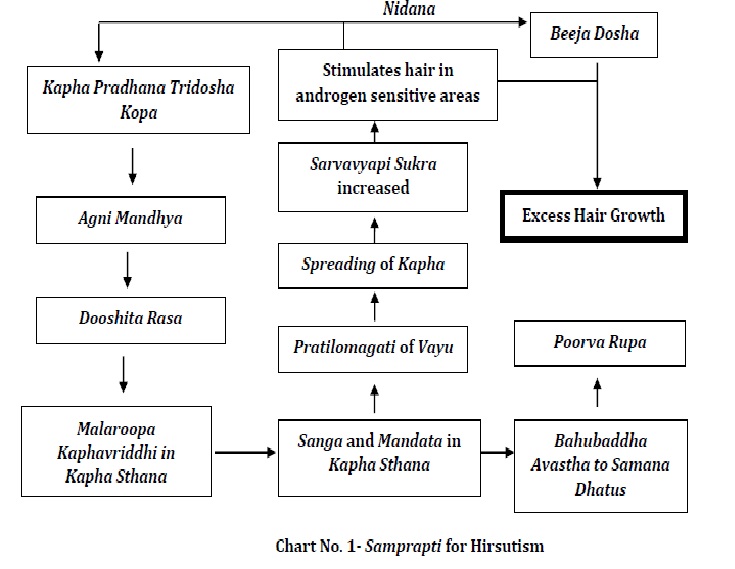A Clinical Approach to Hirsutism
DOI:
https://doi.org/10.47070/ayushdhara.v9i5.1064Abstract
Hirsutism is a condition of hyper androgenism, which is defined as androgen- dependent excessive male- pattern hair growth, affects approximately 10% of women with or without complex underlying pathology. It is a physiological phenomenon if it occurs with a familial history and is considered as a serious condition if it is due to various metabolic and genetic causes along with androgen secreting tumors. Hence an apt treatment is only possible after a proper diagnosis. In our classics, there is no direct term for hirsutism is mentioned. But we can decipher relative aspects from multiple references regarding hair and hair growth. Even though, based on the Dushya involvement it can be considered as a condition of Kapha Pradhana Tridosha Kopa. Hence based on a proper diagnosis through an apt diagnostic technique Abhyantara (internal) as well as Bahya (external) Chikitsa (treatment) like depilation techniques, use of Lepa (topical medicaments), oil etc.
Downloads

Downloads
Published
Issue
Section
License
Copyright (c) 2022 AYUSHDHARA

This work is licensed under a Creative Commons Attribution-NonCommercial-ShareAlike 4.0 International License.


